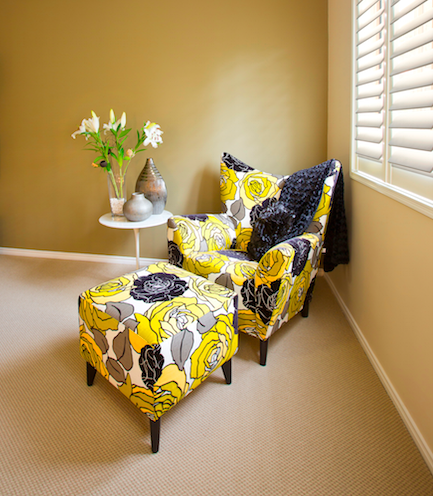The colour yellow is a popular colour for its positive psychological qualities. For example, it can help to create happiness, optimism and confidence for the future.
 Yellow can:
Yellow can:
- Stimulate the mind and body
- Help with self-esteem
- Create enthusiasm
- Inspire original thought and inquisitiveness
- Relate to acquired knowledge
- Help with new ideas
The colour yellow is definitely a force to be reckoned with
The effect of the colour yellow obviously varies with its intensity and hue.
A pale, atmospheric tint of yellow on walls or ceiling can add ‘sunshine’ to a room. While saturated, intense yellows might make you feel anxious or irrational.
Although an uplifting colour, too much yellow can cause ones self-esteem to plummet. Yellow is also the most fatiguing to the eye due to the high amount of light that is reflected.
Best to avoid yellow in the bedroom
Did you know that even when you’re asleep the psychological properties of a colour are still at work! To sleep in a room that is decorated using yellow may cause you (over time) to wake up feeling cranky and annoyed.
Babies’ frequencies are very sensitive so avoid using cream (which also contains yellow) in nurseries and infants rooms.
Complement yellow with purple to balance
If you find you have used too much yellow in your scheme and you feel a bit overwhelmed you can easily counteract this with the addition of purple – being the complementary colour it’s psychological properties help to balance those of yellow.
As yellow is quite a powerful colour it’s understandable if you don’t want it on a wall in your home, but there are other ways of utilising its psychological effects.
Yellow can be great for “highlights”, try and use it smaller doses like in accessories, flowers, or pictures to brighten up darker areas and make them ‘smile at you’.
Don’t underestimate the powerful effect a combination of yellow will have on those who use the space!
If you would like to read about the psychological qualities of green click here.






Leave A Comment Or Ask A Question